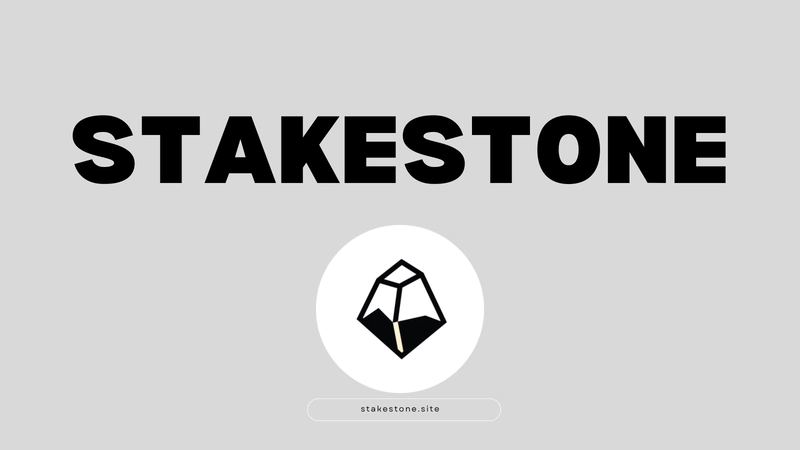
As blockchain ecosystems continue to mature, the demand for capital-efficient and composable staking solutions grows. StakeStone emerges as a modular liquid staking layer designed to facilitate smooth capital flow across multiple chains and protocols, without compromising on decentralization or liquidity.
Positioned at the intersection of staking, liquidity management, and cross-chain composability, StakeStone brings a new architectural approach to DeFi staking infrastructure.
📚 Related:
What Is StakeStone?
StakeStone is a permissionless liquid staking protocol that allows users — and organizations — to stake assets and receive liquid staking tokens (stTokens) in return. These tokens:
Accrue staking rewards over time
Are freely transferable and usable across DeFi
Can be held in DAO treasuries or used in proposals, lending, farming, or liquidity strategies
Unlike traditional staking platforms, StakeStone is modular and chain-agnostic, with a strong focus on cross-chain composability.
As announced in this official post from StakeStone, the protocol has expanded support for native BTC assets on L2.
Why StakeStone Is Gaining Popularity in 2025
As regulatory pressure increases and users migrate away from centralized staking services, protocols like StakeStone have gained momentum due to their decentralized design and flexibility. In 2025, three key trends are contributing to its growth:
DAO Treasury Staking
DAOs are beginning to realize that idle capital in their multisigs can be put to work through liquid staking. StakeStone enables treasuries to earn yield while keeping governance functionality and on-chain liquidity intact.Multichain DeFi Farming
Users can stake ETH on Ethereum through StakeStone and use the stTokens on Layer 2s with lower fees and faster execution, effectively farming and borrowing across multiple chains.Liquid Governance
By issuing yield-bearing stTokens, StakeStone allows stakers to vote in governance systems while their assets remain productive, solving the long-standing issue of inactive governance participation during staking.
How StakeStone Fits Into the Broader DeFi Ecosystem
StakeStone is not just a staking product—it’s an infrastructure layer. Its modularity makes it suitable for:
DeFi platforms needing collateral-backed yield
Lending protocols integrating yield-bearing assets
Cross-chain bridges supporting wrapped staking tokens
DAOs optimizing treasury management
Wallets looking to offer native staking services
Its composability ensures it can plug into various layers of the DeFi stack without requiring custom implementations from scratch.
StakeStone Core Features
🟢 Modular Liquid Staking Layer
StakeStone’s design allows for protocol-level flexibility. The modular architecture supports easy integration with existing DeFi primitives, enabling developers to build on top of it without needing to reinvent the staking logic.
🔄 Cross-Chain Liquidity Flow
StakeStone facilitates movement of liquid staked assets across supported networks, which helps optimize capital efficiency in multichain ecosystems.
⚖️ Non-Custodial Infrastructure
True to the ethos of DeFi, StakeStone ensures that users maintain self-custody over their assets, with all transactions governed by smart contracts that are transparent and verifiable.
Why StakeStone Matters
Staking is a foundational component of Proof-of-Stake blockchains. However, traditional staking locks user assets, rendering them illiquid and restricting their use in DeFi strategies. StakeStone offers a solution to this limitation by turning staked tokens into composable assets that can be reused, traded, or integrated into yield strategies.
With growing interest in capital efficiency, composability, and cross-chain deployment, StakeStone offers tools for:
DAO treasuries seeking yield on idle assets
Builders integrating staking layers into dApps
Retail users wanting flexibility with their staked positions
Ecosystem Presence and Community
StakeStone is steadily growing its ecosystem and community footprint. You can follow development updates and ecosystem integrations through its public channels:
📢 Twitter (X): @__stakestone
👥 CoinMarketCap Profile: StakeStone Labs
🛠️ GitHub for Developers: StakeStone GitHub
The GitHub repository includes technical documentation, smart contract code, and developer onboarding resources for those interested in integrating StakeStone with other DeFi protocols.
Frequently Asked Questions (FAQ)
Q1: What is the main advantage of StakeStone over traditional staking?
A: Traditional staking locks assets and limits their utility. StakeStone provides liquid tokens representing staked assets, allowing users to simultaneously earn staking rewards and participate in DeFi opportunities without sacrificing liquidity.
Q2: Is StakeStone non-custodial?
A: Yes. StakeStone is fully non-custodial, meaning users retain full ownership of their assets throughout the staking and liquidity management processes. Transactions are governed by smart contracts, not centralized intermediaries.
Q3: Can I use StakeStone across multiple blockchains?
A: StakeStone is designed with cross-chain liquidity flow in mind. Users can expect integrations across multiple chains, enabling more flexible and efficient use of their staked assets beyond a single network.
Q4: Where can I find the technical details about StakeStone’s smart contracts?
A: You can access the open-source smart contracts and technical documentation on StakeStone’s official GitHub repository.
Q5: How can I stay updated on StakeStone developments?
A: Follow StakeStone on its official communication channels
These platforms regularly share project updates, integrations, governance proposals, and ecosystem news.
Conclusion
StakeStone is reshaping how liquidity and staking interact in the multichain DeFi economy. By offering a modular and interoperable staking layer, it empowers users and developers to unlock the full potential of PoS assets without sacrificing access to capital or composability.
Whether you're a DeFi strategist, a DAO treasury manager, or an independent developer, StakeStone presents an opportunity to rethink staking not as a lock-in, but as a launchpad for broader DeFi participation.
🔗 Explore StakeStone: https://stakestone.site

